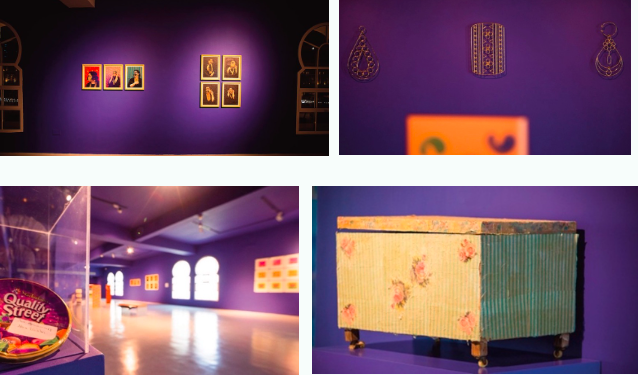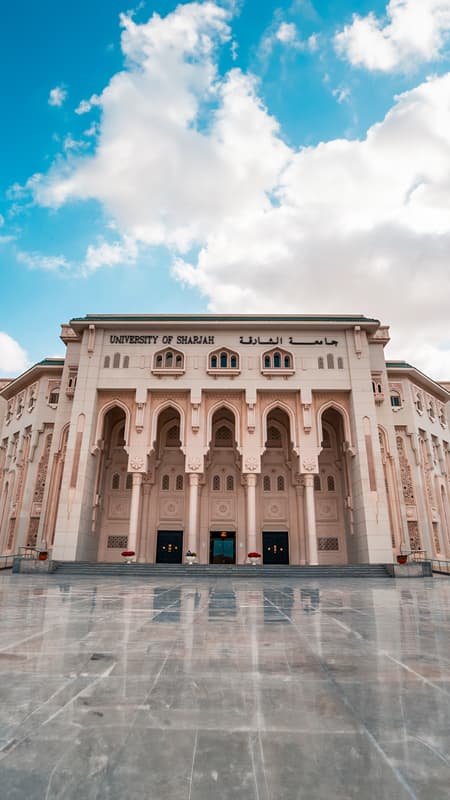New Exhibition Showcases Secrets Of Emirati Women
The contents of wedding boxes packed with treasures are on display in an exhibition in Sharjah, the cultural capital of the United Arab Emirates.
Scores of items ranging from jewelry, treasured gifts, clothing to tin boxes are part of a collection of an exhibition Karima Mohamed Abdelaziz Al Shomely of the University of Sharjah has brought together.
The exhibition, held at Maraya Art Centre in Sharjah, opened in October last year and will run for four months.
The items on display give the new generation a glimpse of wedding traditions in the country's good old days.
Al Shomely, who collected the items on display as part of field work for her doctoral thesis, introduces Emirati women as integral icons of the country's culture.
Her exhibits, besides the 'secrets' of the wedding boxes in which would-be brides stored their belongings, also features videos, prints, photographs, fabrics, and personal collections of Emirati women.

These chest boxes are called “Sahhara" in the Emirati dialect.
They are elaborately decorated wooden boxes, used by Emirati women to collect, and store linen, jewelry, and other personal items in anticipation of marriage, according to Al Shomely.
The chest box was the bride's main possession which she took with her when getting married.
On the wedding day, the Sahhara would be transported to the bride's new house and placed within her private quarters, hidden away from the public, according to Al Shomely.
The four-month exhibition unveils the contents of the Sahhara. It invites visitors to explore hidden Emirati adornments and discover women's experiences in a new light.
“The exhibition explores the manifold layers of how identity is created, expressed, and transformed over time," reads one of the posters Maraya Art Centre put up to guide visitors.
The exhibition is the outcome of research by Al Shomely.
“I wanted to represent my culture in a different way – it is contemporary, it is modern, and it is unusual," she said.
“But also, I wanted to bring something from my culture and my background and that's what I am doing in this exhibition."
Outstanding among the exhibits is a collection of colorful tin boxes of assorted confectionary.
Al Shomely found that once the confectionary was consumed, Emirati women would store their Burqas, face coverings, in these tin boxes to preserve the fabric.
Al Shomely started collecting these tin containers in 2012 while conducting her research interviews. Each tin box is carefully labelled with the names and locations of the interviewees. Shaped like a film reel, the oldest tin box she collected is 70 years old.
Each tin container manifests its own story and the intimate rituals related to owning a Burqa.
Al Shomely considers Burqas as intimate objects that are as valuable as jewelry.
The exhibition also showcases a series of photographs of a woman wearing the Burqa and decked with gold jewelry, evoking the concept of inner and outer beauty with items contained within the Sahhara.
Additionally, Al Shomely carefully picked out five large golden forms to represent traditional jewelry worn by Emirati women. She focused on the intricacy of each golden piece – an earring, a hair clip, a closing brooch of a necklace, a ring, and a bracelet and immortalized them as hanging art objects on the wall.
Usually hidden safely within a wooden box, these types of jewelry were valuable possessions stored for special occasions such as weddings, Henna nights, or in some cases, sold when needed.
Al Shomely's exhibition demonstrates the gradual dying out of the custom of wearing the Burqa. One of her exhibits is a video featuring a Burqa submerged in water.
“When I submerged the Burqa in water, the indigo escaped immediately, as if the fabric was bleeding, much like the disappearance of Burqa in contemporary society," she said.
“The bleeding Burqa is both an object and a subject; a metaphor for a changing society. Representing the narrative of memory, it is an active witness of a lost past," Al Shomely explained.

